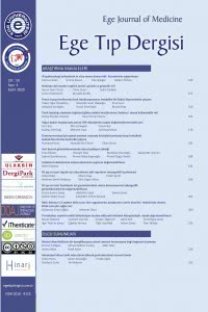The relation of bruxism and dermatoglyphics
Diş sıkma, Dermatoglifikler, El parmakları
Bruxism, Dermatoglyphics, Fingers,
- ISSN: 1017-7698
- Yayın Aralığı: 3
- Başlangıç: 2018
- Yayıncı: Ege Üniv. Tıp Fak.
A case of joubert syndrome with t (20; 21)
F. Ferda ÖZKINAY, HASAN YÜKSEL, Ruhi ÖZYÜREK, Cumhur GÜNDÜZ, Gül SAPMAZ, Raşit V. YAĞCI, Sarenur TÜTÜNCÜOĞLU, Cihangir ÖZKINAY
Mine YURTSEVEN, AYŞEGÜL UYSAL, Hüseyin AKTUĞ, ALTUĞ YAVAŞOĞLU, Utku ATEŞ
Reactions and attitudes of medical students to cadaver dissection
Canan SAYLAM, Aliye MANDIRACIOĞLU, Emel LÜLECİ, Z. Aslı AKTAN, İnci DOĞANER, Atamaz Yelda PINAR
Abnormality of renal position leading to interpretation error in DMSA scintigraphy
Alper SOYLU, Lerzan SELÇUK, Mehmet TÜRKMEN, Erkan DEREBEK, Salih KAVUKÇU
The role of antibiotic prophylaxis on recurrent urinary tract infections in a developing community
Alper SOYLU, Salih KAVUKÇU, Mehmet TÜRKMEN, Bilge ÇELİKKOL, Füsun ÇELİKKOL
A case of malignant mesothelioma of the tunica vaginalis
Emin ÖZBEK, Süleyman ÖZEN, Engin AYDIN
Long-term results of deep dorsal vein resection of the penis in corporal venous insufficiency
The relation of bruxism and dermatoglyphics
M. Hakan POLAT, Gülümser EVLİYAOĞLU, Ayşen AZAK, Özlem KARABULUT
